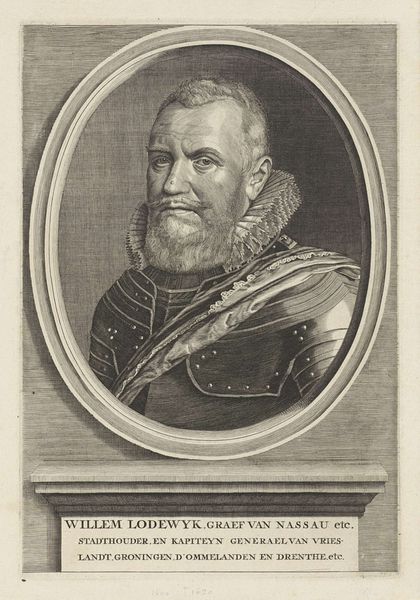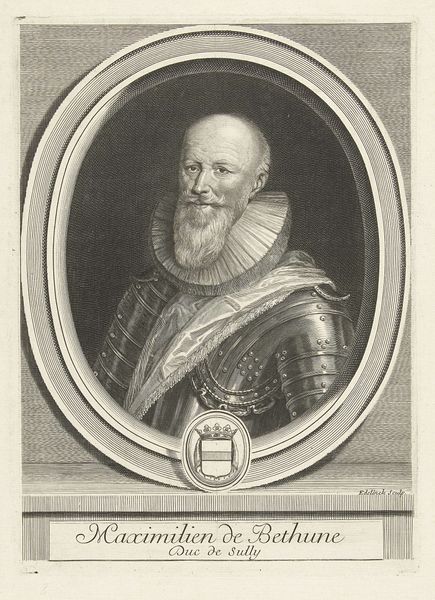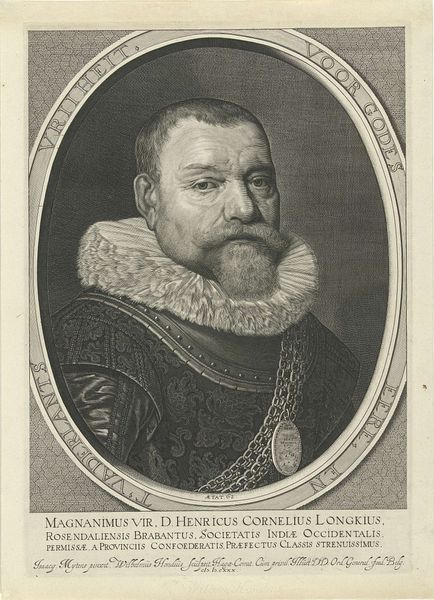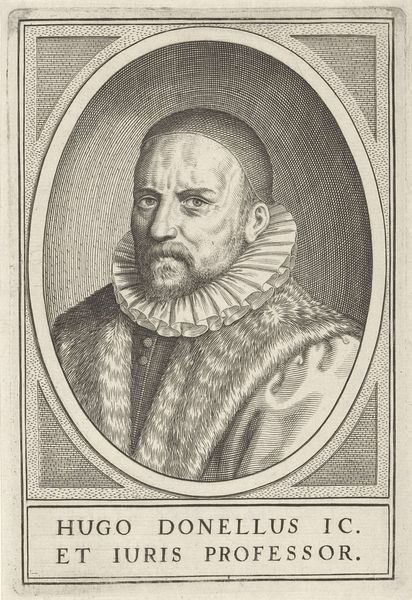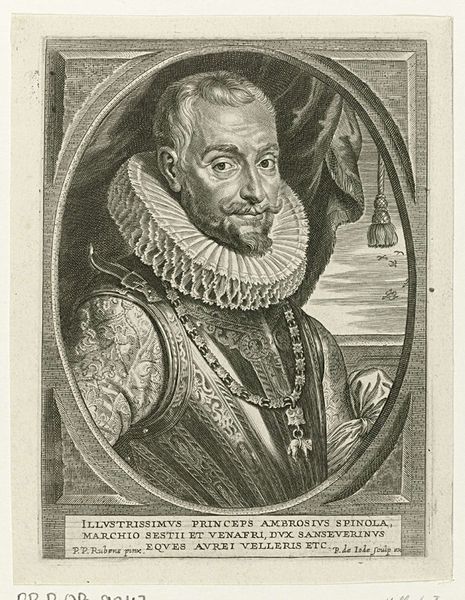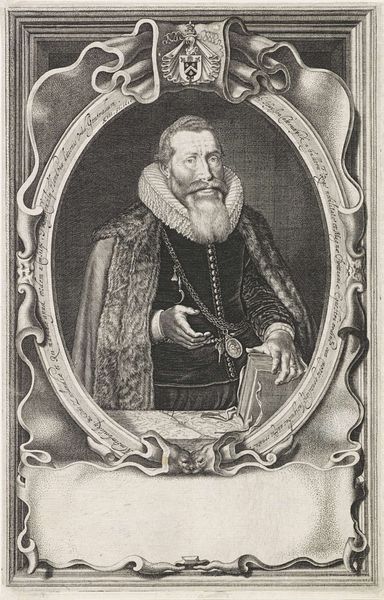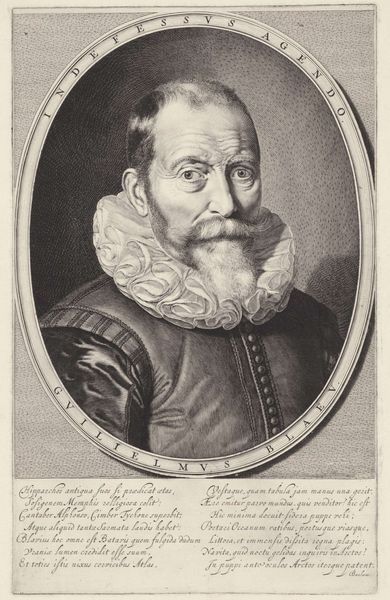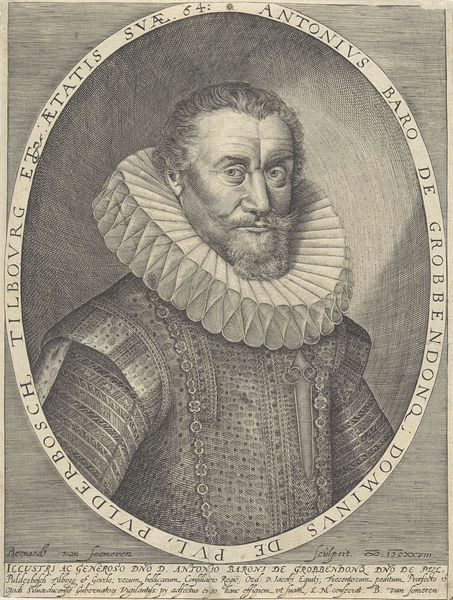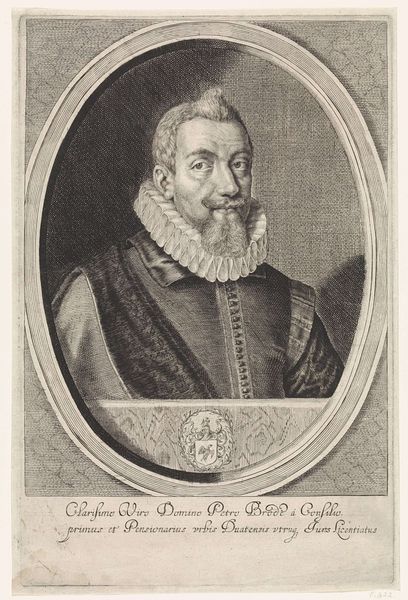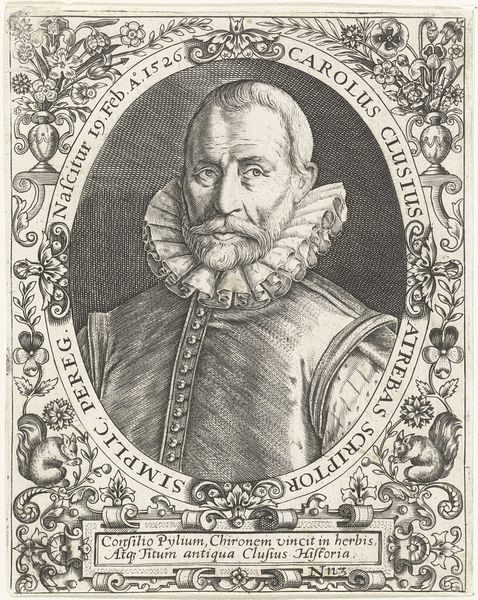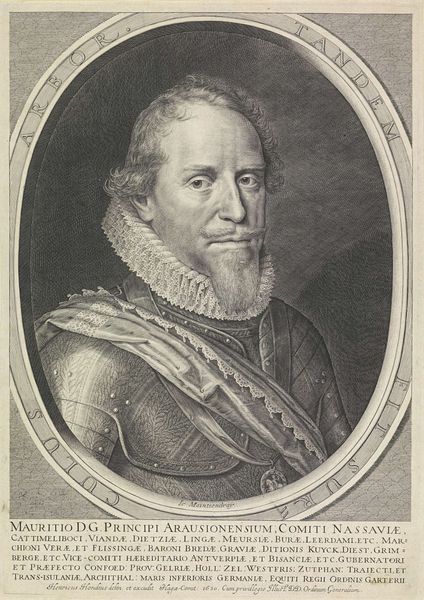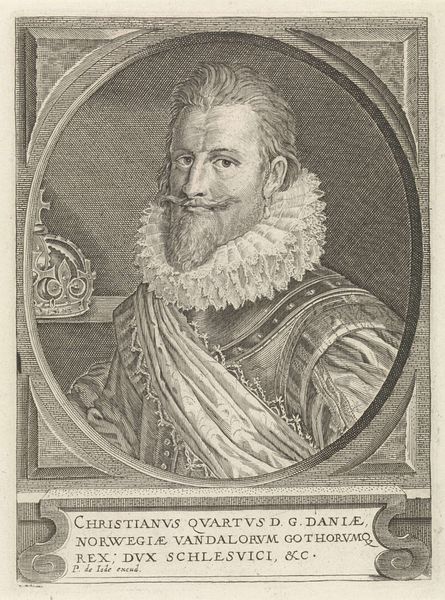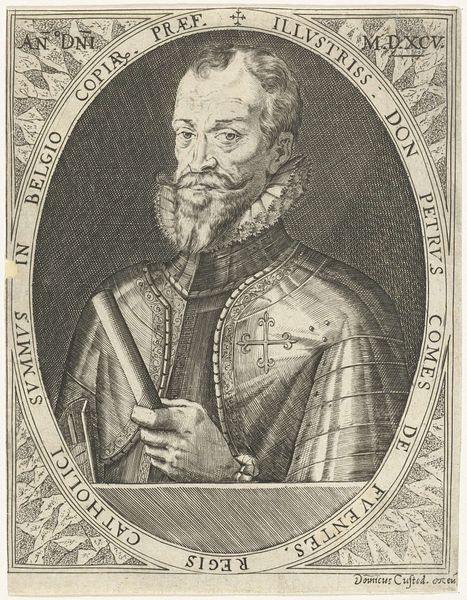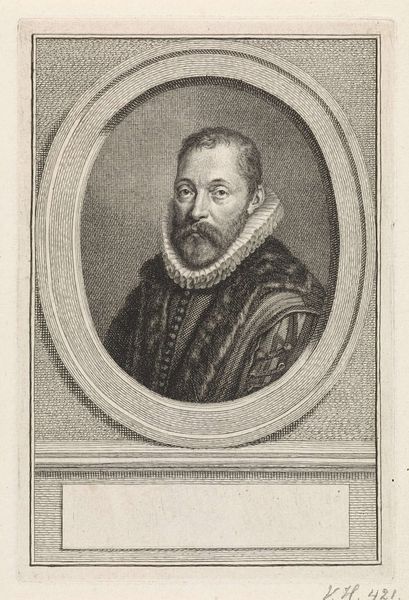
engraving
#
portrait
#
baroque
#
history-painting
#
engraving
Dimensions: height 414 mm, width 298 mm
Copyright: Rijks Museum: Open Domain
This is a portrait of Willem Lodewijk, Count of Nassau-Dillenburg, made in 1627 by Hendrick Hondius the First. It is an engraving, a printmaking technique that involves incising an image onto a metal plate, inking the plate, and then transferring the image to paper. Consider the labor involved in this process: the meticulous cutting of lines into the metal, the precise application of ink, and the careful printing. These highly skilled tasks remind us that even seemingly simple images are the result of considerable technical prowess. Note how the material of the print – its inherent flatness and capacity for fine detail – has influenced its appearance. The sharp lines create a sense of realism, capturing the texture of Lodewijk’s beard, the folds of his clothing, and the metallic sheen of his armor. Engraving had a profound social impact, as it allowed images to be reproduced and disseminated widely. This portrait, therefore, is not just an artwork, but a testament to the power of printmaking in shaping public perception and solidifying social status. It’s a potent reminder that art is always entwined with broader issues of labor, politics, and consumption.
Comments
No comments
Be the first to comment and join the conversation on the ultimate creative platform.
